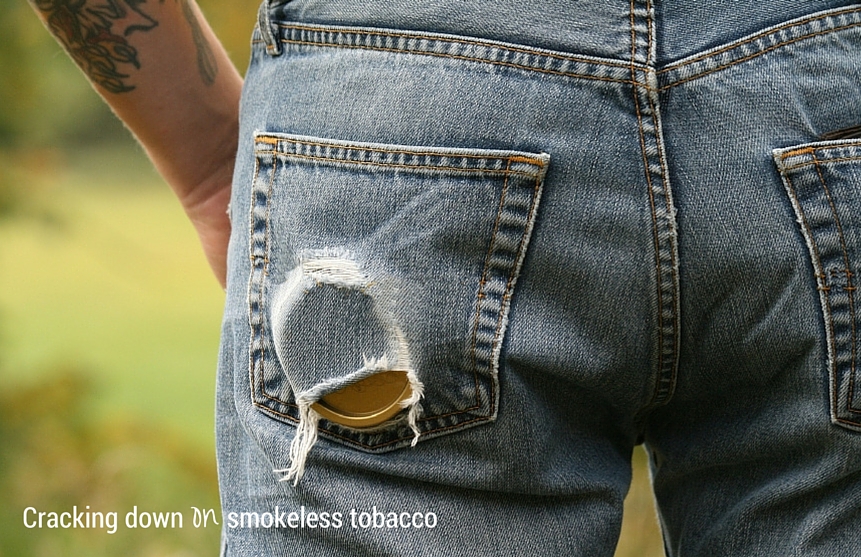Call it chew, chaw, dip, snus, plug or anything else.
By any name, smokeless tobacco is a health hazard and the U.S. Food and Drug Administration (FDA) and several municipalities are working to curb its use.
Last month, the FDA expanded its campaign to educate rural, white male teenagers about the health hazards associated with smokeless tobacco use – including nicotine addiction, gum disease, tooth loss, and multiple kinds of cancer – by running ads in 35 markets and conducting a social media campaign.
According to the Substance Abuse and Mental Health Services Administration, each day in the U.S. nearly 1,000 males under the age of 18 try smokeless tobacco for the first time. The pattern is even more alarming in rural communities where its use is often culturally ingrained.
White, male youth are more likely to use smokeless tobacco than any other youth group. According to the most recent data from the FDA’s Population Assessment of Tobacco and Health (PATH) study, 32 percent of rural, white males between the ages of 12 and 17 are either experimenting with, or at-risk for, using smokeless tobacco. That’s about 629,000 young men.
“In communities where smokeless tobacco use is part of the culture, reaching at-risk teens with compelling messaging is critical to help change their understanding of the risks and harms associated with smokeless tobacco use,” Mitch Zeller, director of the FDA’s Center for Tobacco Products, said in a press release.
The FDA isn’t the only organization fighting back against smokeless tobacco. Numerous cities with Major League Baseball stadiums including New York, San Francisco, Boston and Los Angeles have enacted laws banning its use at sporting events and in recreational areas that issue tickets. By 2017, 10 of 30 cities with MLB ballparks and teams will have bans in place, according to ESPN, which notes that an estimated 30 percent of MLB players use it.
As far as the medical community is concerned, the high-profile campaigns are welcome measures that will hopefully spread the word about the dangers of smokeless tobacco.
“It is vital that consumers realize the risk and exposure of smokeless tobacco is about the same as regular smokers,” says Dr. Lawrence Brennan, a medical oncologist with OHC. “Users are exposed to at least 30 chemicals that are known to cause cancer. Cancers of the mouth, tongue, cheek, gum and esophagus are linked to chewing or dipping tobacco.”


